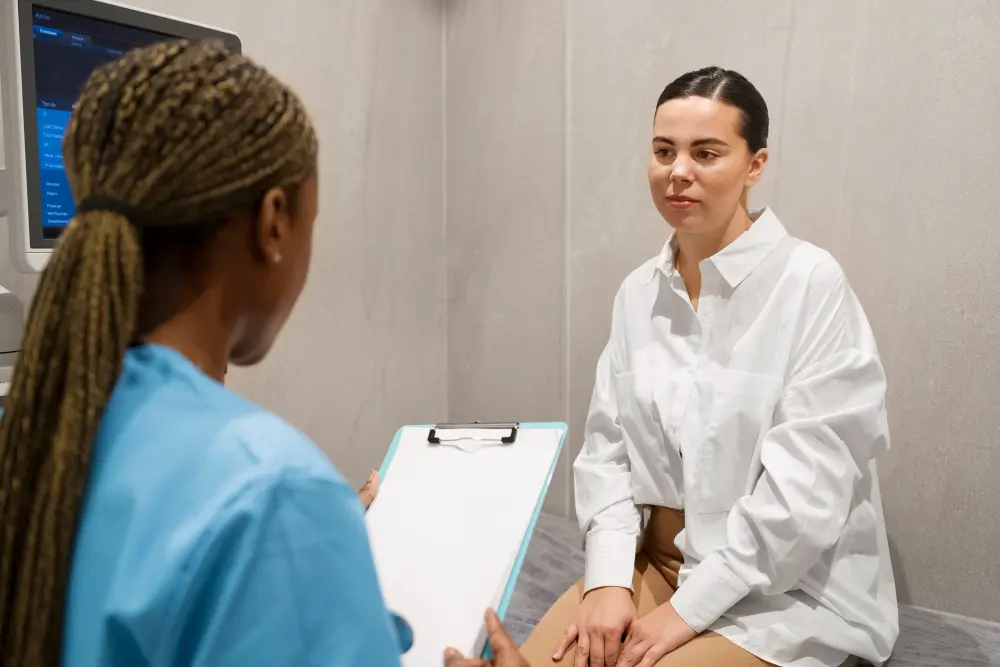If you’ve been dealing with ongoing stomach pain, acid reflux, or mysterious digestive symptoms, your doctor may recommend an endoscopy. But what exactly is it, and why is it so important?
At GI Solutions, we believe in educating our patients so they feel confident and comfortable about every step of their gastrointestinal care. Here’s everything you need to know about the endoscopy procedure, how it works, and when you might need one.
What Is an Endoscopy?
An endoscopy is a non-surgical procedure used to examine the inside of your upper digestive tract. It involves a thin, flexible tube called an endoscope, which has a light and a camera at the tip.
Typically, the endoscope is gently inserted through the mouth. From there, it travels down the esophagus, into the stomach, and through the first part of the small intestine (the duodenum). This allows your doctor to view real-time images of the inside of your digestive system and identify signs of inflammation, ulcers, bleeding, tumors, or other abnormalities.
When Is an Endoscopy Recommended?
Endoscopies are often recommended when certain digestive symptoms persist without a clear cause. For example, your GI specialist may suggest one if you are experiencing:
- Chronic heartburn or acid reflux (GERD)
- Unexplained abdominal pain
- Difficulty swallowing (dysphagia)
- Nausea or vomiting
- Bleeding in the upper GI tract
- Unexplained weight loss
- The need for screening (e.g., for Barrett’s esophagus or stomach cancer)
In many cases, an endoscopy not only helps with diagnosis, but may also allow for treatment during the same procedure.
What to Expect During the Procedure
At GI Solutions, your comfort and safety come first. An upper endoscopy is usually performed as an outpatient procedure and takes about 15 to 30 minutes. Most patients are given a mild sedative to help them relax.
Here’s what typically happens during the process:
Here’s what happens:
- You’ll lie on your side, and a local anesthetic will be used to numb your throat.
- Next, the doctor will gently insert the endoscope through your mouth.
- A video camera at the end of the scope will send real-time images to a screen.
- If needed, small tools can be passed through the scope to collect tissue samples (biopsies) or remove abnormal growths like polyps.
Since the procedure is quick and minimally invasive, recovery is also fast in most cases.
Is It Safe?
Yes, endoscopy is considered very safe and is performed routinely across the country. While there are some minor risks, such as a sore throat, temporary bloating, or slight bleeding if a biopsy is taken, serious complications are rare.
At GI Solutions, we take every precaution to ensure your procedure is performed with the highest standards of care.
Endoscopy vs. Colonoscopy: What’s the Difference?
It’s easy to confuse an endoscopy with a colonoscopy, but they serve different purposes.
- Endoscopy (Upper GI): Looks at the esophagus, stomach, and duodenum.
- Colonoscopy (Lower GI): Examines the colon and rectum.
Your gastroenterologist will recommend the right test depending on your symptoms and medical history.
Why Choose GI Solutions?
When it comes to digestive health, experience and technology matter. At GI Solutions of Illinois, we combine advanced diagnostic tools with a compassionate approach to care. Here’s what sets us apart:
- State-of-the-art equipment
- Board-certified gastroenterologists
- Personalized treatment plans
- In-clinic procedures for comfort and convenience
- Fast results and clear follow-up guidance
If you need an endoscopy for diagnosis or screening, we’re here to help you get the answers and relief you deserve.
Schedule Your Endoscopy Appointment Today
Early detection saves lives. If you’re experiencing ongoing digestive symptoms, don’t wait. Contact GI Solutions to schedule a consultation or request an endoscopy near you. Our experienced team is ready to guide you through every step.
Heading to a GI Appointment? Don’t Forget to Ask These 5 Questions

